Photo



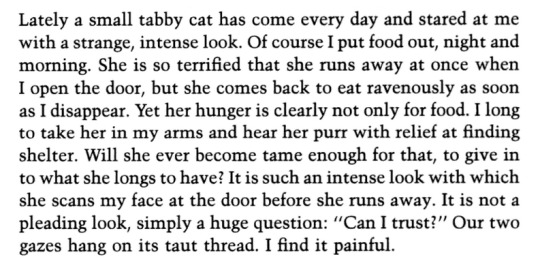




on touch, trust, and fear
Anne Carson, “Dirt and Desire - Essay on the Phenomenology of Female Pollution in Antiquity” | In the Mood for Love, dir. Wong Kar-wai | May Sarton, Journal of a Solitude | Louise Glück, “Epithalamium” | photographer unknown (via @birsiyahhikayesi ) | Mary Ruefle, “The Cart”
10K notes
·
View notes
Photo

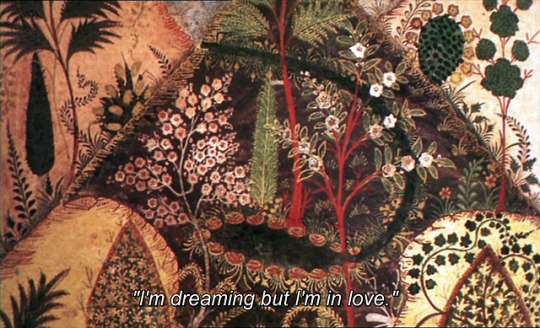
Plaisir d’amour en Iran (Agnès Varda, 1976)
27K notes
·
View notes
Photo
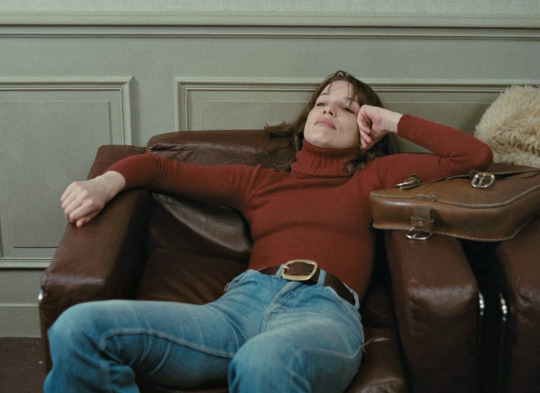


L’amour l'après-midi (Love in the Afternoon) serves as the ultimate tests for the principles that form our moral universe. “Rohmer observes his characters’ conduct—particularly the men’s—with a Catholic emphasis on choice and free will. Their behavior affects the social balance of their somewhat privileged middle class while also reflecting it.”
What is particularly special in L’amour l'après-midi is Chloé – “the most domineering of all the Moral Tales’ women. A dark-eyed, dark-haired, aggressive bohemian, she immediately unsettles Frédéric’s bourgeois complacency. (...) She’s socially unmoored, floats between jobs, and speaks with the free-love attitude of the era’s liberated woman. Chloé is not the idealized jeune fille of Frédéric’s prologue reverie but a gate-crasher to his high-minded, self-protective suburban pretenses. (She even wears pants!)”
“The sudden reality of sex challenges Rohmer’s men, confronting their weaknesses and compulsions with moral dilemmas. The Moral Tales are structured to explore each man’s individual system of right and wrong conduct, eventually turning their private ethical battles into psychological farce. Love in the Afternoon closes Rohmer’s circle with what at the time must have seemed a shockingly conservative thesis. (...) The discreet ellipsis that occurs during Love in the Afternoon’s climactic portrayal of Frédéric and Hélène’s marriage resembles the pact at the end of My Night at Maud’s, but with a stronger, almost idealized, sense of stability. As if proving the thesis tested throughout Six Moral Tales, Rohmer closes the series with an optimistic view of the ways in which women and men eternally negotiate their trust and companionship, seeking a resolution to their spiritual foundering on their quest toward the divine.”
Footnotes to Plato & The Criterion Collection
11 notes
·
View notes
Photo
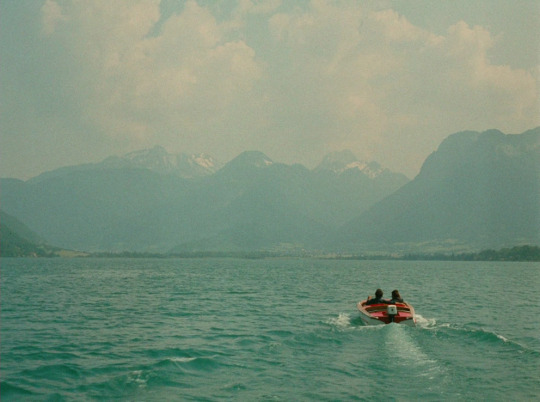

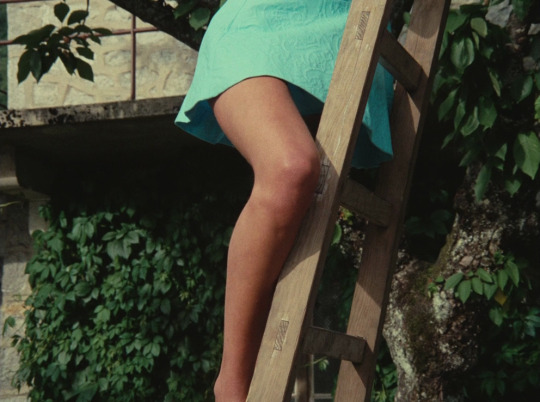
Le Genou de Claire
Of Eric Rohmer’s “Six Moral Tales,” “none seems more indigenous to cinema than Claire’s Knee (1970), the joint in question, that of a pretty blonde teenager on a ladder, becoming the fulcrum of an exquisite dissertation on the perversity of desire.” The film becomes a canvas for philosophical musings about the value of affection and image fetishism.
The image of Lake Annency’s enigmatic romanticism is largely painted Laura, who “suffers the delights and torments of love with an eloquence that far surpasses, in candor and intensity and the sheer poetry of her soul, the niggardly sensibility of her casually lecherous suitor.” While her half sister, Claire, seems unusually bleak and uninteresting, yet ironically, she is the one that awakens the uncontrollable desire in Jerome, “a conventional womanizer.” “This sort of safe philosophy of love is a characteristic of Rohmer’s complacent males, but the commitment that goes with it can’t be summarily dismissed.”
“This self-serving piety, typical of Rohmer’s deluded protagonists, will be quickly disproved when he finds himself attracted to the fetching Claire, and to a knee that has little to do with moral fiber. It is Laura who articulates the first principle of the Rohmerian world, the connection between outer and inner selves,” leading to questions: “How does beauty or ugliness, virtue or immorality, shape personality?” The epiphanies occur when the moral and the physical intersect, when the stubborn integrity of a character suddenly bursts furiously forth, irradiating the face and the landscape with the force of a revelation.”
“In fact, in Rohmer’s universe, women are instruments of men’s improvement,” in the sense that they “force them to confront prejudices,” allowing men to step out of their comfort zone and experience fresh perspectives, “thanks to someone who surprises our preconceptions, forces us to radically readjust categories and criteria. An intellectual may be attracted to a girl with whom he can’t discuss Pascal or Dostoyevsky; that does not make her an object of ridicule. Possibly she will be fresher and more interesting, less chock-full of ready-made formulations, than he is. But on some level, she must be able to account for herself, leave a verbal signature.”
The summer days by Lake Annency serve as a backdrop for unusual action; one embodied in words rather than physical activities. Jérôme’s conversations with women in the household explore the Rohmerian sense of romantic and sexual attractions.
Footnotes to Plato & The Criterion Collection
#Eric Rohmer#Six Moral Tales#Claire's knee#Le genou de claire#French new wave#quarantine movies#french summer#french countryside
19 notes
·
View notes
Photo
Le Genou de Claire






#Eric Rohmer#Le genou de claire#Claire's knee#French summer#French countryside#New wave#Film#French Film
3K notes
·
View notes
Photo



Le Souffle au Coeur
Le Souffle au Coeur is my most beloved film. It is a tender portrait of a sexual maturation. Malle’s film “offers an unusually full and individualized characterization of a boy whose yearnings, sensitivities, and fantasies outstrip his personality—the sort of unformed figure that creators less bold, candid, or inventive than Malle would never dare to present as their surrogate.”
It is perhaps the reason why Laurent’s character mesmerizes us. The fourteen-year-old is a Camus enthusiast with profound observations about this world, which continuously challenge the Catholic rigor of his school. With a grain of skepticism and unusual precaution, he approaches topics such as sex and religion. “Ferreux offers the perfect image for Laurent: his legs seem too long for his body, and his head too big for it; his expressions of mischief and of petulance, or even rage, are all equally beguiling.”
Laurent’s love for jazz and literature (and more importantly, an ability to form sophisticated opinions about them) makes it almost seem as if the boy reached an intellectual maturity. However, Malle did not want to set Laurent way above his peers or his mischievous older brothers, but aimed to portray “how Laurent’s imagination imbues him with more vulnerability and awareness, and also more charisma, than the others.”
The movie is denies the patriarchal caricatures that have pervaded the bourgeois pop culture. It is a satirical tale in which the head of family, Dr. Chevalier, embodies the “reference to the lowest rank of the French Legion of Honor, mocks upper-middle-class social aspirations. He’s proud of a Corot he found in the attic; but his eldest sons have it forged, just for the elation of knowing that their old man can’t tell the difference between the original and the copy, which leads to a delicious, heart-stopping practical joke.“
In contrast, the mother – Clara, is the character who, along with Laurent, dominates the household and the film. This passionate Italian, who grew up as the daughter of a rebellious father, says she fell for Chevalier because, with a beard, he looked like Garibaldi. She’s got a voracious appetite for sensual pleasure and freedom.”
Footnotes to Plato & The Criterion Collection
3 notes
·
View notes
Photo

Lacombe, Lucien continued
Like Pierre Blaise, Aurore Clemente has never acted before. “She lacks an actress’s tension, and so at times she seems a passive camera subject, but she gives us the double nature of France’s response to Lucien: her amused derision of his ignorant attempts to play the courtier, and the sensual bond that draws them together. We see, even, that underneath France’s fastidiousness and her sharp sensitivity there’s a practical animal streak. Clément’s beauty is almost prehensile.” Aurore, therefore, also serves as Malle’s instrument of exploration, in this case, she embodies a lens through which we observe and attempt to understand Lucien.
“There is nothing admirable in Lucien, yet we find we can’t hate him. We begin to understand how his callousness works for him in his new job.” He is a boy of little sentiment; he easily takes and give material possessions and even, it could be argued, puts very little value on a human life – he is “indifferent when he witnesses the torture, and he shows no more reaction to killing people himself than to shooting a rabbit for dinner or a bird for fun.” In many ways we are absolutely hypnotized by his relationship with France because of the awareness that their bond is so fragile, “Lucien would have stood by as France was taken away.”
And so this boy, with little values and personal sentiment, becomes the ultimate agent of justice in Malle’s film.
Footnotes to Plato & The Criterion Collection
0 notes
Photo
Lacombe, Lucien
My love affair with Louis Malle’s works began with Le Souffle au Coeur. Lacombe, Lucien intrigued me with its title – “introducing himself to a delicate, fine-boned parisienne, the farm-boy hero of Louis Malle’s new movie does not give his name as Lucien Lacombe; he gives the bureaucratic designation—Lacombe, Lucien.”
Lucien is Malle’s embodiment of evil: banal and impulsive, lacking deliberation, and the movie is the direct opposite of that. It is complex in its very foundation starting from the casting: Pierre Blaise, an inexperienced actor is put in the position of Lucien to “respond to events with his own innocence, apathy, animal shrewdness.” To Malle, a camera is merely “an investigative instrument” through which he explores the story and lets it unfold, hoping that it will discover the unimaginable.
“We look at Blaise’s face in a different way from the way we watch a trained actor. We look into it rather than react to an actor’s performance. The enigma of a Lucien, whether he is a bullyboy of the right or the left, is the enigma of an open face and a dark, closed mind. Professional actors have the wrong kind of face for this sort of unborn consciousness, and they tend to project thoughts and feelings from the blank area. Blaise doesn’t, and we trust our readings of his silent face almost as if we were watching a documentary. We examine it in that way, and we’re more engaged than at most fictional films.”
Footnotes to Plato & The Criterion Collection

34 notes
·
View notes